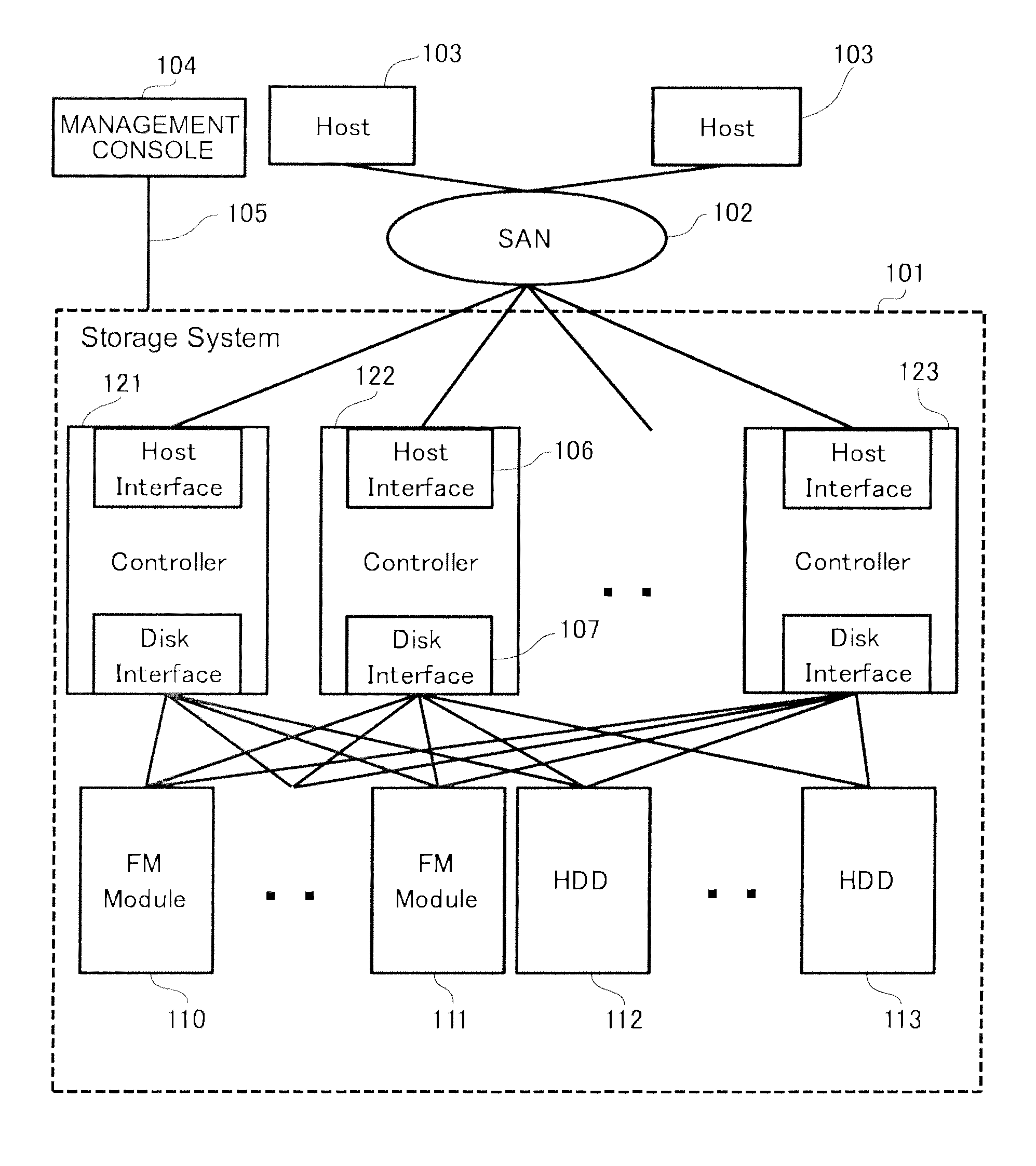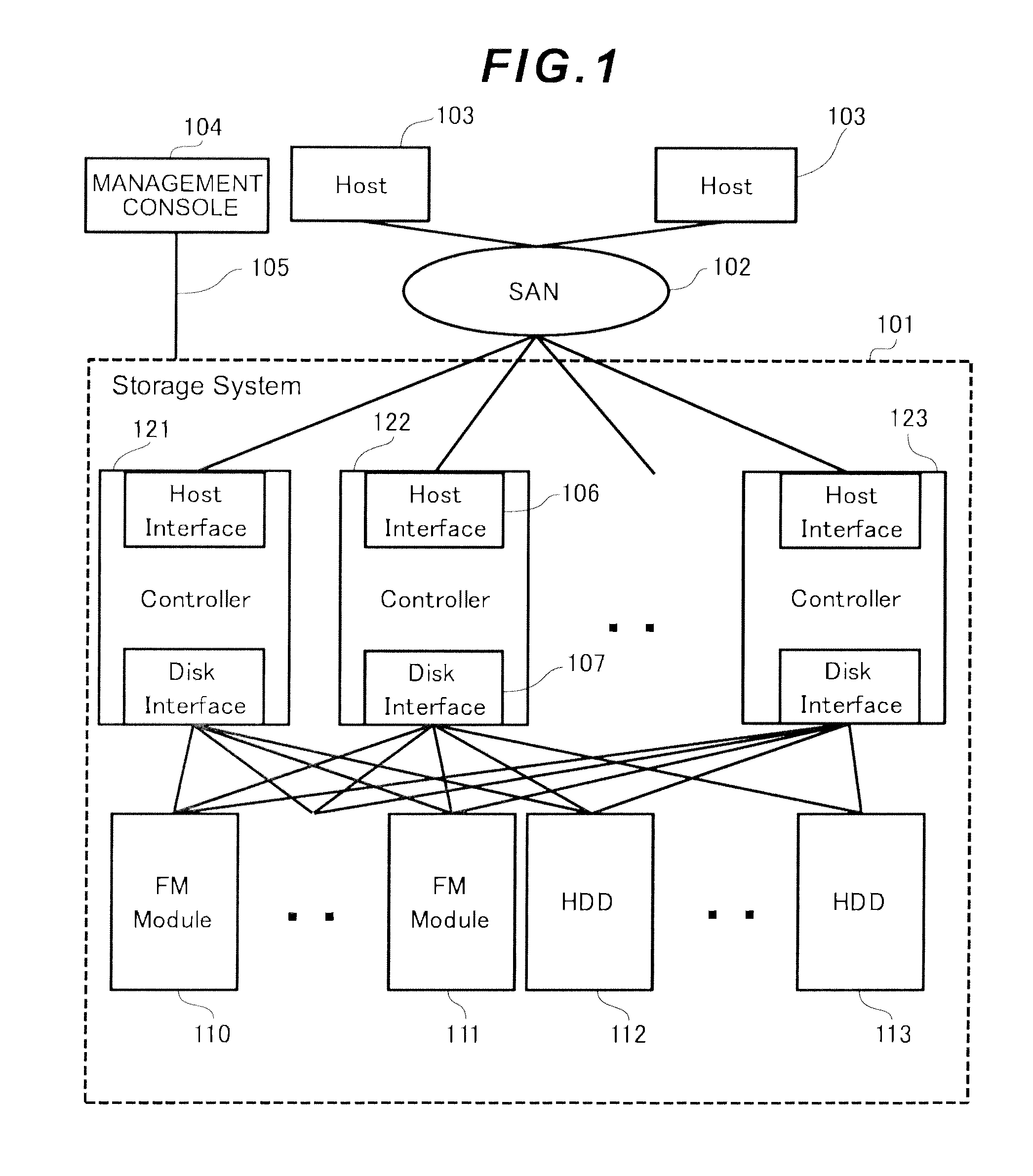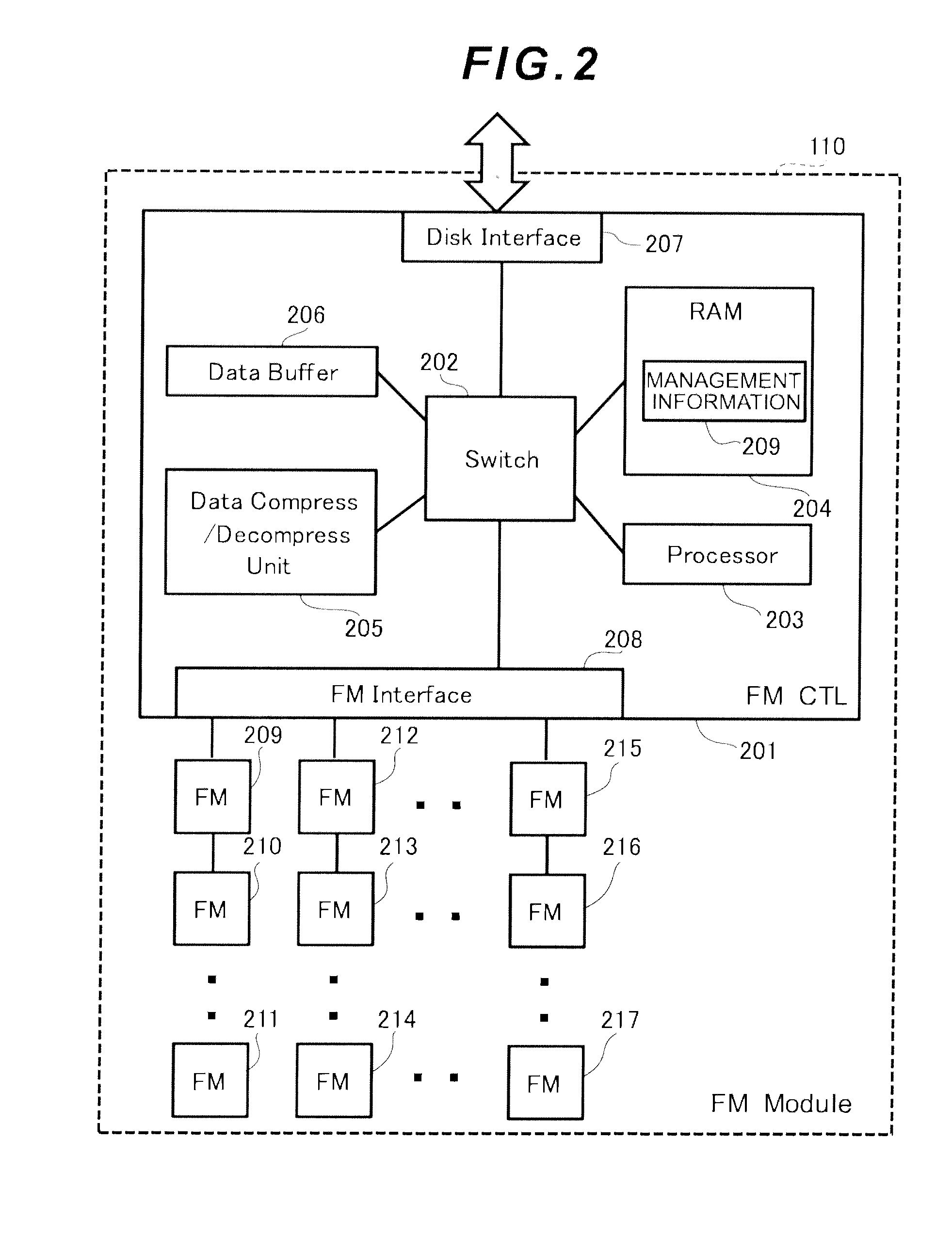Semiconductor storage device and data control method thereof
a technology of semiconductor storage device and data control method, which is applied in the direction of memory address/allocation/relocation, instruments, computing, etc., can solve the problems of reducing device performance and long time taken to erase flash memory, and achieve the effect of prolonging the operating life of the devi
- Summary
- Abstract
- Description
- Claims
- Application Information
AI Technical Summary
Benefits of technology
Problems solved by technology
Method used
Image
Examples
example 1
[0042]The first embodiment (Example 1) is configured such that the physical blocks, which are batch erase units among the data storage areas of the flash memory, are each divided into a base area which is a storage destination of new write data and an update area which is a storage destination of update data, and a physical page, which is a minimum write unit, is divided into a plurality of pages in the base area and the update area respectively, and when data is stored on any of the physical pages of a physical block based on a write request, the write data added to the write request is compressed, and on condition that the physical pages serving as write targets are reduced, the compressed data is stored on any of the physical pages, the number of physical pages assigned to the base area belonging to the physical block is reduced, and the number of physical pages assigned to the update area of the physical block is increased.
[0043]FIG. 1 is a schematic configuration diagram of a c...
example 2
[0214]A flash module according to a second embodiment ample 2) will be explained next. The second embodiment is the same as the first embodiment with regard to the address conversion management information (LBA / PBA conversion management information) 600, the update area management information 800, and the read / write operation of the flash module 110 and therefore an explanation of these elements is not included here.
[0215]In the second embodiment, data compression is performed in the event of data compression during a data write according to the first embodiment, but also for a reclamation operation and refresh operation. In addition, the read frequencies of the PBA group to be compressed during data compression is referred to and only those PBA groups with a low read frequency are compressed.
[0216]According to the second embodiment, the data with a high read frequency is stored in the flash memory in an uncompressed form, and a performance drop which is inevitably produced by the o...
example 3
[0277]In the first and second embodiments, the LBA and PBA are managed separately with areas of a fixed size serving as the LBA groups and areas of the physical block size serving as PBA groups, and optional PBA groups are assigned to the LBA groups However, in the third embodiment (Example 3), an example is shown in which the physical page size units which are the minimum read / write units of the flash memory are managed separately as LBA Pages and PRA Pages, optional PBA Pages are assigned to the LBA Pages, and data compression is applied to this address conversion management configuration.
[0278]The third embodiment is the same as the first embodiment and second embodiment with regard to device configuration and erase management information, therefore a description is omitted.
[0279]FIG. 16 is a conceptual view which conceptually shows correspondence between an LBA space and PBA space according to the third embodiment.
[0280]As shown in FIG. 16, in the third embodiment, the LBA space...
PUM
 Login to View More
Login to View More Abstract
Description
Claims
Application Information
 Login to View More
Login to View More - R&D
- Intellectual Property
- Life Sciences
- Materials
- Tech Scout
- Unparalleled Data Quality
- Higher Quality Content
- 60% Fewer Hallucinations
Browse by: Latest US Patents, China's latest patents, Technical Efficacy Thesaurus, Application Domain, Technology Topic, Popular Technical Reports.
© 2025 PatSnap. All rights reserved.Legal|Privacy policy|Modern Slavery Act Transparency Statement|Sitemap|About US| Contact US: help@patsnap.com



